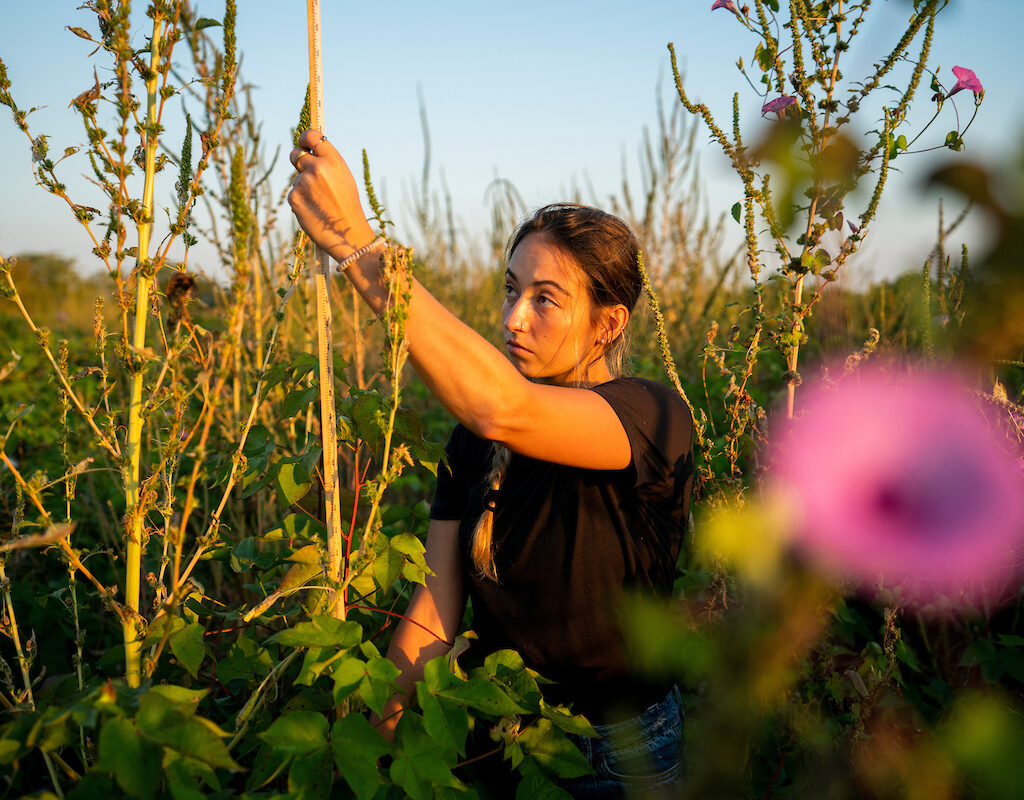Weeds & Invasive Plants
We offer educational resources on weeds, native weeds and invasive species of plants. Information on topics ranging from the economic and environmental harm of invasive species to how to control or eradicate them, as well as the important role native weeds play in our ecosystem, is available to all Texans.

Learn About
Weeds & Invasive Plants
Publications
Programs
All Resources on Weeds & Invasive Plants
- Publication
This publication outlines the primary weed pests of spinach, integrated weed management strategies, and recent research findings as they influence current best practices for controlling weeds in spinach.
- Publication
The tropical sod webworm can cause significant damage to managed turf very quickly. This publication explores this pest's life cycle and geographic distribution as well as how to identify the larval stage and the damage it causes. Sources for treatment recommendations are included. (2 pages)
- Publication
This publication outlines the cultural, mechanical, and chemical methods for controlling weeds in wheat. It includes recommendations for pre-plant, pre-emergence, post-emergence, and post-harvest herbicides as well as harvest aids. Also detailed are herbicide restrictions, modes of action, and efficacy for grasses and weeds. (25 pages)
- Publication
This guide was developed for professional turfgrass managers, county Extension agents, and others who maintain athletic, golf course, landscape, recreational, or utility turfgrasses. Resources include Texas A&M AgriLife Extension Service Faculty, Industry cooperators, published literature, and general knowledge of herbicides, insecticides, and fungicides available to the turfgrass industry. (120 pages)
- Publication
Yellowing of wheat leaves in Texas is a problematic symptom during winter and early spring. This publication will help you determine if it is caused by nutrient deficiency, herbicide injury, freeze damage, moisture stress, disease, and insect issues’ some combination thereof. You can then select an appropriate management strategy. (5 pages)
- Publication
This Bermudagrass lawn management calendar details relevant aspects of selection, mowing, irrigation, fertilization, weed and insect control, and aeration. The document includes a month-by-month lawn care calendar indexed to in-depth explanations of each topic within the document. Included also are pre- and post-emergence herbicide references. (9 pages)
- Publication
When performed properly, mowing is used to maintain a particular turf grass height and appearance that supports the specific use and aesthetic expectations of that area. This publication details several mowing factors and recommendations for warm-season turf grasses. (4 pages)
- Publication
Bermudagrasses are widely used for sports field playing surfaces in transition zones and southern climates. To maintain high-quality and visually-appealing playing surfaces during the dormant season, sports fields are often overseeded with a cool-season turfgrass. This publication discusses considerations for choosing a cool-season turfgrass species, field preparation, and proper seeding techniques, as well as post-seeding […]
- Publication
It can be difficult for homeowners to differentiate between herbicide products available to them. This publication was created as an overview of several active ingredients commonly found in widely-available herbicides and simple tips for product selection. (12 pages)
- Publication
Turfgrass on athletic fields needs to meet several requirements. It needs to be able to withstand heavy traffic, recover quickly, and be aesthetically pleasing. Bermudagrass provides an excellent option for athletic fields, especially for ones in the climactic transition zone. This fact sheet outlines the suitability of bermudagrass for these fields and offers recommendations for […]